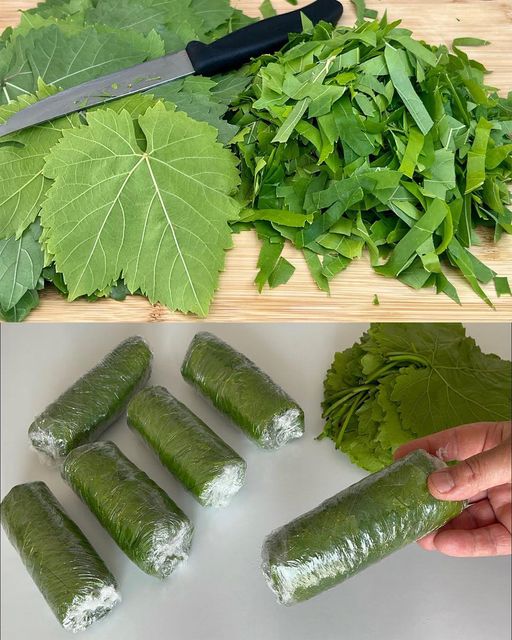Grape leaves have been a staple in various cuisines for centuries, prized for their unique flavor and versatility. Beyond their culinary uses, grape leaves offer a plethora of health benefits that make them a valuable addition to any diet. This article explores the top ten health benefits of grape leaves, showcasing why this leafy green should be a regular part of your meals.
1. Rich in Antioxidants
Grape leaves are packed with antioxidants, particularly flavonoids, which help combat oxidative stress in the body. Oxidative stress is linked to various chronic diseases, including heart disease and cancer. By including grape leaves in your diet, you can help protect your cells from damage caused by free radicals.
2. Anti-inflammatory Properties
The anti-inflammatory compounds found in grape leaves, such as quercetin, help reduce inflammation in the body. Chronic inflammation is a contributing factor to many health conditions, including arthritis and cardiovascular diseases. Regular consumption of grape leaves can help mitigate these risks.
3. Supports Heart Health
Grape leaves are beneficial for heart health due to their high content of dietary fiber and potassium. Fiber helps lower cholesterol levels, while potassium aids in maintaining healthy blood pressure. Together, these nutrients support overall cardiovascular health.
4. Aids in Digestion
The fiber content in grape leaves not only supports heart health but also promotes healthy digestion. Fiber helps to regulate bowel movements and prevent constipation. Moreover, it supports a healthy gut microbiome, which is essential for overall digestive health.
5. Low in Calories
For those looking to manage their weight, grape leaves are an excellent addition to the diet. They are low in calories, making them a perfect option for those who want to enjoy flavorful meals without the extra calories.
6. High in Vitamins and Minerals
Grape leaves are a rich source of essential vitamins and minerals, including vitamins A, C, and K, as well as calcium, magnesium, and iron. Vitamin A is crucial for eye health, vitamin C boosts the immune system, and vitamin K plays a vital role in blood clotting and bone health. The minerals in grape leaves support various bodily functions, from muscle contraction to bone density.
7. Promotes Healthy Skin
The antioxidants and vitamins in grape leaves contribute to healthy, glowing skin. Vitamin C, in particular, helps in collagen production, which is essential for maintaining skin elasticity and reducing signs of aging.
8. Boosts Immunity
With a high content of vitamin C and other immune-boosting compounds, grape leaves help strengthen the immune system. Regular consumption can help fend off common illnesses and infections by enhancing your body’s natural defense mechanisms.
9. Supports Bone Health
Calcium and vitamin K in grape leaves are vital for maintaining strong and healthy bones. Vitamin K helps in the regulation of calcium in the bones and blood, reducing the risk of bone-related disorders such as osteoporosis.
10. Enhances Metabolism
The various vitamins and minerals found in grape leaves can help boost your metabolism. B vitamins, in particular, play a significant role in energy production and metabolic processes. A well-functioning metabolism is crucial for overall health and can aid in weight management.
By incorporating grape leaves into your diet, you can enjoy these extensive health benefits. Whether used in traditional dishes or as a creative addition to modern recipes, grape leaves are a powerhouse of nutrition that can significantly contribute to your well-being.
Leveraging the Benefits of Grape Leaves
Incorporating grape leaves into your diet can be both delicious and beneficial for your health. Here are some practical ways to leverage the health benefits of grape leaves:
1. Traditional Stuffed Grape Leaves
One of the most popular ways to enjoy grape leaves is by stuffing them with a mixture of rice, herbs, and sometimes meat. This Mediterranean delicacy, known as dolma or dolmades, is not only flavorful but also a great way to benefit from the nutrients packed in grape leaves.
2. Salads and Wraps
Use fresh grape leaves as a unique addition to salads or as a wrap for sandwiches. Their slightly tangy flavor pairs well with various ingredients, adding a nutritious twist to your meals.
3. Stews and Soups
Grape leaves can be chopped and added to stews and soups for an extra boost of vitamins and minerals. They complement many recipes, especially those with a Mediterranean or Middle Eastern flair.
4. Tea and Infusions
Grape leaves can be dried and used to make herbal teas. This tea can be enjoyed hot or cold and offers a gentle way to reap the antioxidant and anti-inflammatory benefits of grape leaves.
5. Smoothies and Juices
For a quick and easy way to include grape leaves in your diet, add a few fresh leaves to your smoothies or juices. Their mild flavor blends well with fruits and vegetables, providing an extra nutritional punch without overpowering the taste.
6. Fermented Foods
Fermenting grape leaves can enhance their nutritional value and introduce beneficial probiotics into your diet. Pickled grape leaves can be used in various dishes or enjoyed on their own as a healthy snack.
7. Pestos and Sauces
Blend grape leaves with nuts, garlic, and olive oil to create a unique pesto or sauce. This can be used as a spread, dip, or dressing, adding a nutritious element to your meals.
Grape leaves are a versatile and nutritious addition to any diet, offering numerous health benefits from their rich antioxidant and anti-inflammatory properties to their ability to support heart health, digestion, and immunity. By incorporating grape leaves into traditional and modern recipes, you can enjoy their unique flavor and health benefits in a variety of ways.

